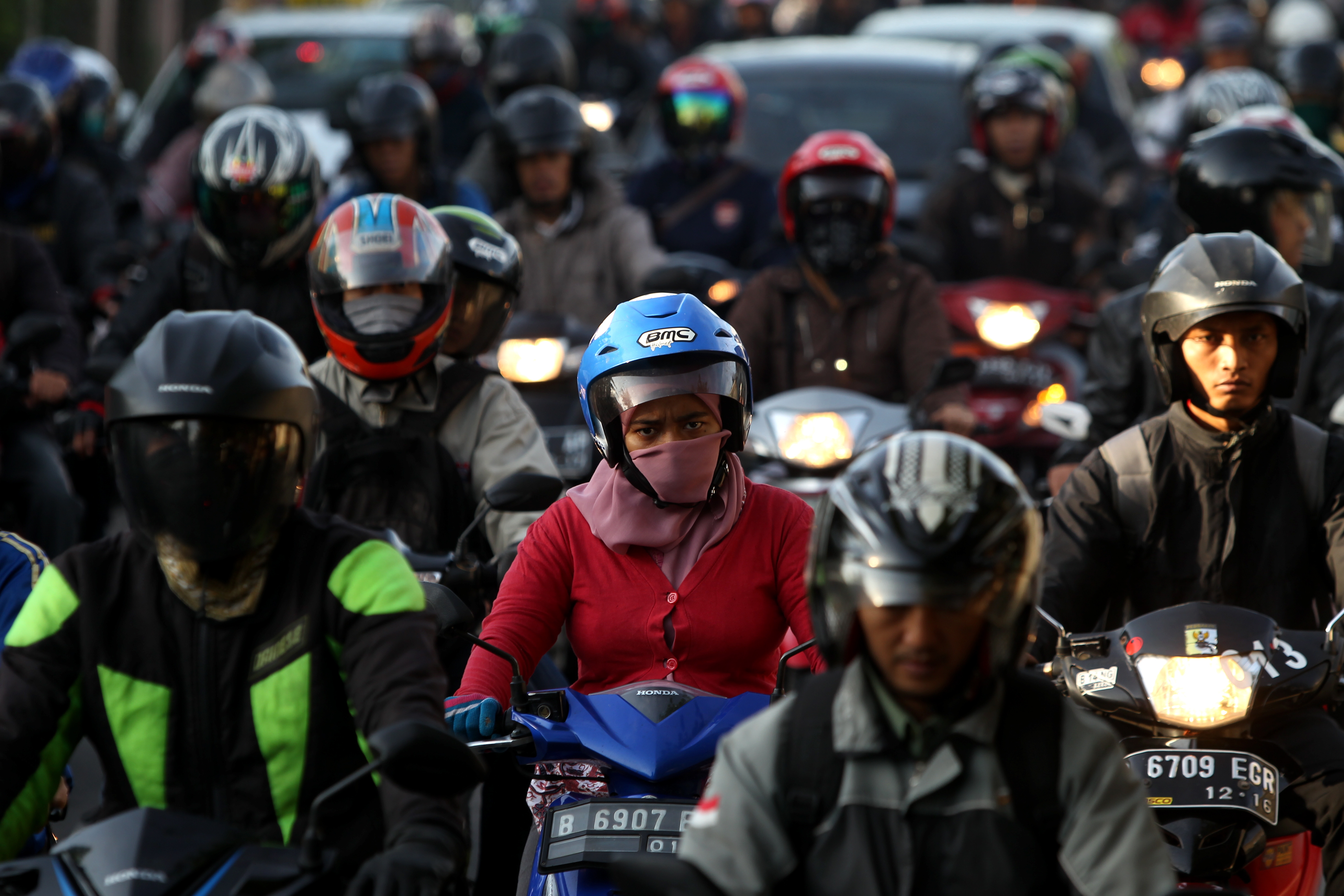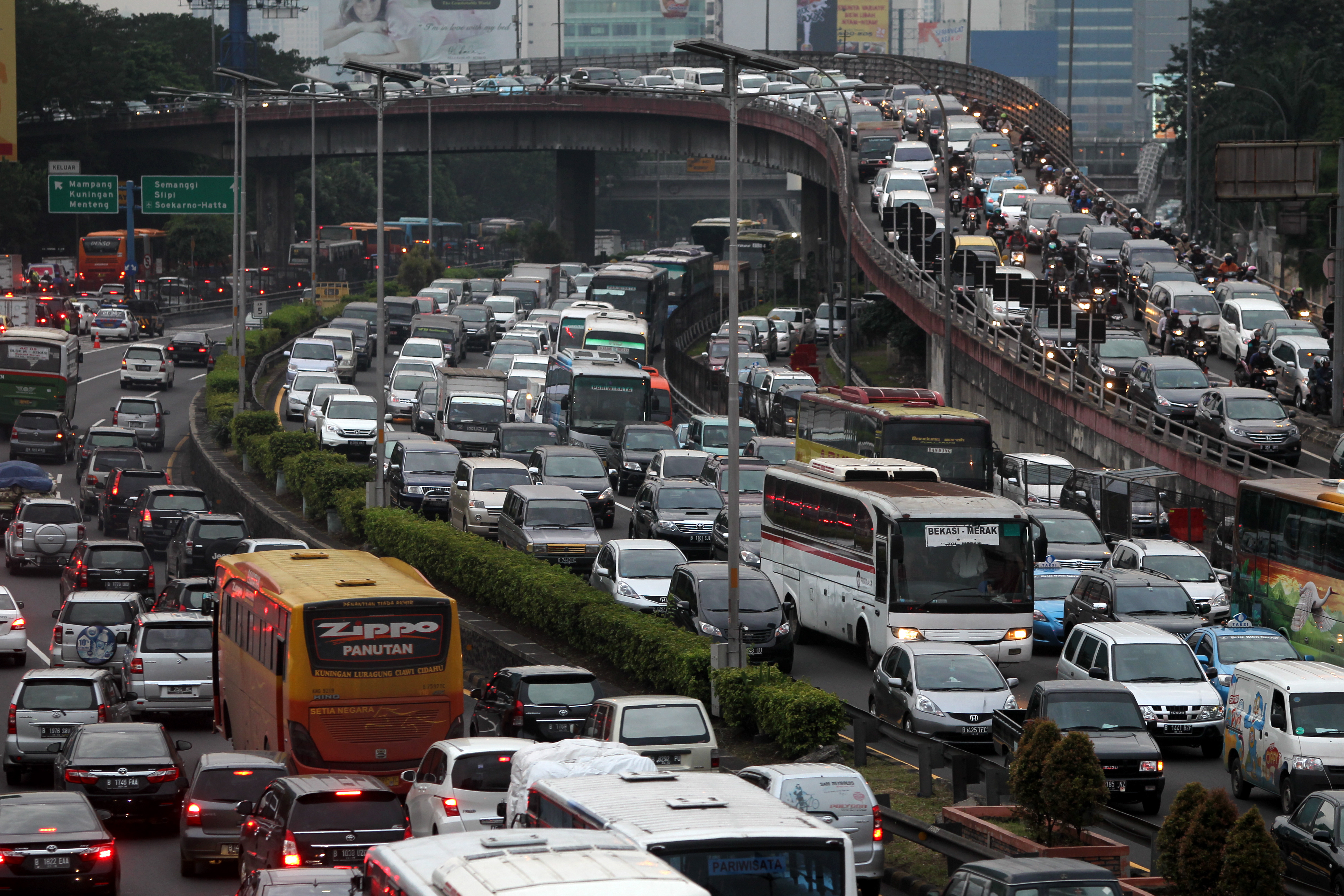
JAKARTA—"We're talking about the equivalent of a jumbo jet crash every week," said Mustapha Benmaamar, a transport specialist with the World Bank whose office in a sleek office tower floats high above the din and clamor of one of Asia's fastest growing cities.
"When a jumbo jet crashes, it's big news," he continued. "But here, these people die in silence."
Actually, it's more like two jumbo jet crashes a week. Each day an average of 120 people die in accidents on Indonesia's roads.
It's the word "accident" that bothers Benmaamar and other road safety professionals.
"You reach a tipping point when these deaths are perceived not as something accidental, but as a result of a problem that has to be tackled. Only then will you see the fatalities start to drop," he said. "Indonesia has not reached that point."
The first thing a visitor notices about traffic in Indonesia—and in other developing countries in Asia—is the sheer number of small motorcycles. There are now more than 60 million motorcycles on Indonesia's roads, compared to 8 million cars.
The spectacular surge in the number of motorcycles here began a decade ago when the economy first opened up and easy credit became available to the masses. Motorcycles with sticker prices of $1,000 or so could be purchased for a little money down and a modest monthly payment.
In Jakarta, the crowded capital, swarms of buzzing motorcycles dart in and out and around the semi-permanent gridlock of cars and trucks and buses. They pop up on sidewalks and zoom insanely down one-way streets in the wrong direction. In a region prone to sudden downpours, they form flash mobs beneath overpasses, blocking traffic on main thoroughfares until the rain passes. Stop signs and red lights are not for them. Pedestrians get no respect.
This has produced an equally spectacular surge in the number of road deaths—from just over 8,000 a year in 2002 to more than 16,500 five years later and doubling again three years later. Sixty percent of the fatalities were riders of two- or three-wheelers.
Pedestrian deaths—21 percent of the total road fatalities in Indonesia—are another major concern. Official figures do not reveal the number of pedestrian deaths linked to motorcycles, but it is safe to assume the number is significant.
Take a walk in Jakarta—or almost any booming urban area in the developing world—and the perils facing pedestrians quickly become apparent. Sidewalks, when they exist at all, are often obstacle courses. Narrow and cluttered with commerce, they were never designed to get walkers from here to there. Crosswalks are rare and no self-respecting driver would ever deign to yield to a mere person on foot.
Many of Jakarta's sidewalks feature yawning gaps in the pavement that reveal the dark plumbing beneath the city's streets. Sometimes the sidewalk just trails off; other times it ends abruptly in a cliff-like drop-off into a murky pool of standing water. Even in the newer areas of the city, where shiny new office towers and residential high-rises sprout like cultures in a petri dish, cars come first—with sidewalks a distant afterthought.
All of this tends to push pedestrians into the streets, where they become the most vulnerable species in the daily Darwinian struggle to survive Jakarta's highway mayhem.
Repairing and maintaining sidewalks, creating pedestrian crossings and dedicated lanes for motorcyclists, slowing urban speed limits—these are steps that would go a long way toward lowering the number of "accidents" while actually speeding travel times through the city. So too would investment in public transport.
"We believe that if you push clean, affordable, safe, decent public transport, you might get people off their motorcycles, out of their cars and out of the streets," said the World Bank's Benmaamar.
Officials in Jakarta have tried to ease the city's paralyzing gridlock by creating a network of segregated bus lanes along the city's main thoroughfares. The bus lanes work just fine—the new buses are fast, frequent, cheap and clean; they can reduce travel times by two-thirds. But what has left officials scratching their heads is that people are not using them; the buses are carrying only about 25 percent of their capacity.
And then there is the law of unintended consequences. To encourage carpooling, officials in Jakarta established special high-occupancy vehicle lanes along the main commuting routes. To use these HOV lanes, cars have to be carrying a driver and at least two passengers.
But these days, the approaches to the HOV lanes are jammed with people on foot—mothers with babies, ragged old men, teenagers in baseball caps and baggy pants—offering their services as "jockeys." For a few rupiahs, they will ride with solo drivers. While Jakarta's HOV lanes might not be doing much to ease vehicular congestion, they are putting more pedestrians in harm's way.




